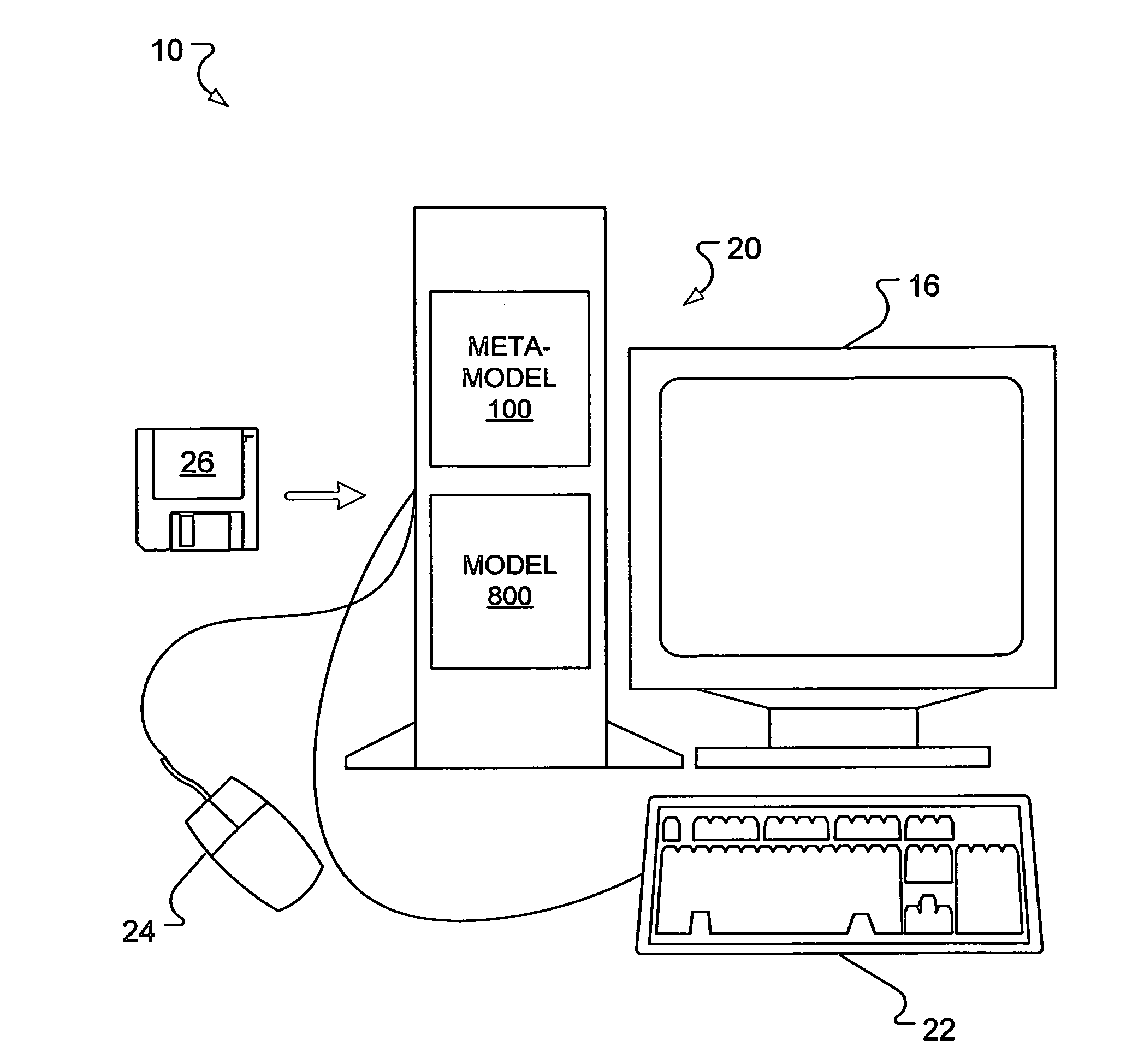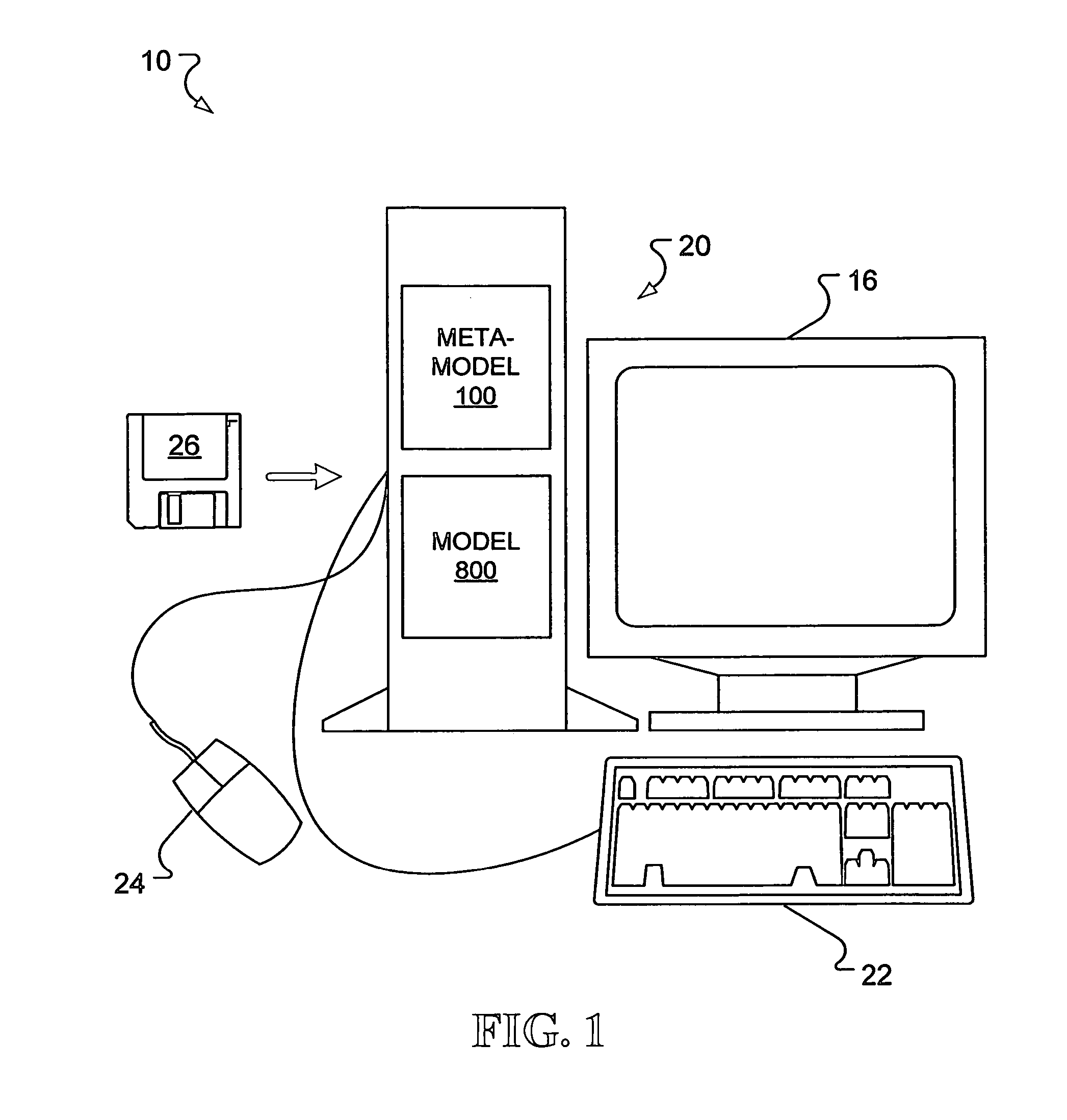Meta-model for associating multiple physical representations of logically equivalent entities in messaging and other applications
a technology of logically equivalent entities and meta-data, applied in computing models, instruments, electric/magnetic computing, etc., can solve the problems of complex introduction of new formats, inability to accurately represent the message mb>1/b> sent in another wire format, and the inability to convert between numerous alternative physical representations of the same underlying information, etc., to achieve efficient “spare” models, reduce redundant entity meta-data, and facilitate conversion between alternative physical representations
- Summary
- Abstract
- Description
- Claims
- Application Information
AI Technical Summary
Benefits of technology
Problems solved by technology
Method used
Image
Examples
Embodiment Construction
[0038]FIG. 1 illustrates a computing system 10 storing a meta-model 100 and a model 800 exemplary of the present invention. The computing system 10 consists of a computing device 20 having a processor in communication with memory in which said meta-model 100 and model 800 are stored. Computing device 20 includes a display 16 and multiple input peripherals, such as a keyboard 22 and mouse 24, and may include hardware to network with other computers (not shown).
[0039]In the present case, the meta-model 100 and model 800 pertain to messaging. The purpose of meta-model 100 is to provide classes for generating a logical model of one or more messages in a platform and programming language independent manner and for generating a physical model of alternative wire format representations of those messages. The model 800 is an instantiation of the meta-model 100 and includes such a logical model and physical model. The model 800 is used to support conversion of messages from one wire format t...
PUM
 Login to View More
Login to View More Abstract
Description
Claims
Application Information
 Login to View More
Login to View More - R&D
- Intellectual Property
- Life Sciences
- Materials
- Tech Scout
- Unparalleled Data Quality
- Higher Quality Content
- 60% Fewer Hallucinations
Browse by: Latest US Patents, China's latest patents, Technical Efficacy Thesaurus, Application Domain, Technology Topic, Popular Technical Reports.
© 2025 PatSnap. All rights reserved.Legal|Privacy policy|Modern Slavery Act Transparency Statement|Sitemap|About US| Contact US: help@patsnap.com



